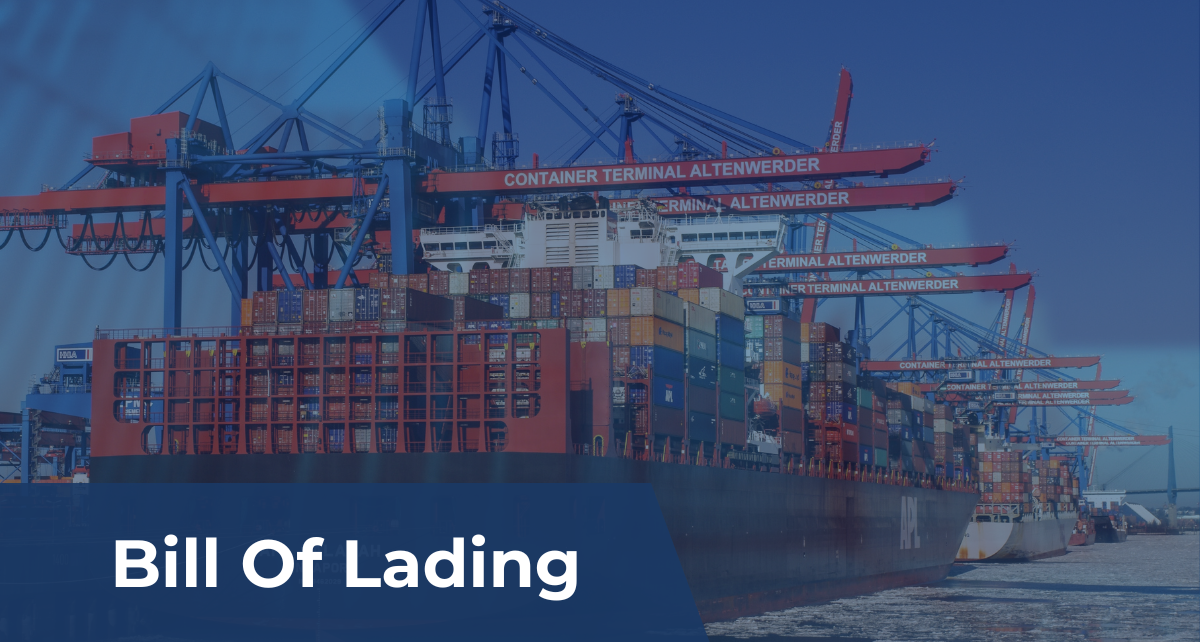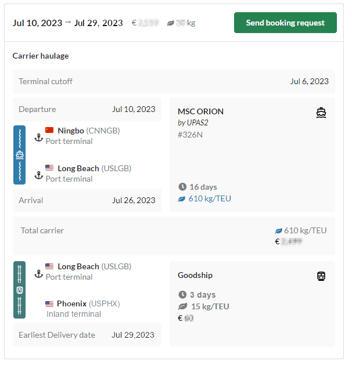What Is a Bill of Lading and Why Do You Need It?
Collaboration, Visibility and Tracking, BuyCo features
Irrespective of whether your goods are being transported by sea, road or air, you will need a bill of lading. A Bill of Lading serves as a contract that protects all the involved parties and smoothens the supply chain flow. Let’s learn more about it.
What is Bill of Lading?
A Bill of Lading (BOL) can be described as a legal document detailing the contract between the shipper, carrier and consignment recipient. A signed BOL must always accompany goods when they are being transported from one place to another irrespective of the mode of transportation. It is issued by the shipping company or the freight agent.
Some of the details listed on a bill of lading are:
- - Names and addresses of the shipper and receiver
- - Purchase order numbers or other reference numbers
- - Instructions for cargo handling
- - Date of shipping
- - Item description
- - Type of packaging
- - Freight class
- - Destination
Function of Bill of Lading
A Bill of Lading has 3 main functions. It serves as a:
Document of Title:
A Bill of Lading does not give the right to ownership of the goods being transported but provides the right to possess and carry the described goods.
Contract for Transportation:
A Bill of Lading is a legal document detailing aspects such as the type of goods being transported, consignment weight, shipper, consignee, destination, etc. It also details the carrier’s responsibilities over transportation and acts as a contract of carriage.
Shipment Receipt:
The Bill of Lading is structured such that it allows whoever is in possession of the document to claim ownership of the goods described in it. Hence, it also acts as evidence of having received the goods at various stages of transportation.
Why Bill of Lading is important?
A Bill of Lading is important for the exporter, importer and shipping company.
For the Exporter:
A BOL serves as proof of having handed over the shipment to the transporter and details the condition of the goods when received. If any damage occurs in transit, this frees them from liability for the same.
For the Importer:
A BOL allows the exporter to give advance intimation of the shipment to the importer to help them plan. It also clarifies the freight amount payable based on the actual shipment weight and value. Most importantly, it allows the importer to transfer titles by endorsing delivery.
For the shipping company:
A BOL gives shippers the right to hold the shipment and thus protects them from being accused of theft. By clarifying the condition of the goods received and the type of packaging used, the BOL also protects them from wrongful claims by the exporter/ importer. Finally, it serves to prove the delivery of the shipment.
Type of Bill of Lading
Some of the most common types of bills of lading are:
Clean bill of lading
This type of bill of lading is issued by the shipper stating that goods have been received and loaded on the vessel in good condition without any apparent damage or loss.
Negotiable bill of lading
This type of Bill of Lading must be a clean bill of lading. It allows the buyer of the consignee to transfer the contract of carriage to a third party. Thus, anyone holding the original copy of the document can receive the goods. There are many sub-types in this category.
Claused Bill of lading
If the cargo is damaged or there are any anomalies in the shipment, the carrier issues a Claused Bill of Lading that outlines the damages/ changes in quantity. Importers can refuse shipments accompanied by a Claused Bill of Lading.
Straight Bill of lading
A Straight Bill of Lading or non-negotiable bill of lading limits the carrier’s liability and does not allow the shipment to be transferred from one consignee to another. In this case, only the consignee named on the document can receive the goods.
Through Bill of lading
A Through Bill of Lading is more complex as compared to other types of Bills of Lading since it allows for goods to be transported domestically and internationally through multiple modes of transportation.
Inland Bill of lading
This BOL is a contract for transportation of goods over land. It mainly covers transportation over road, rail and inland waterways
Ocean Bill of lading
This Bill of Lading covers international transportation of goods by ships. Goods being transported by air must be accompanied by an Air Waybill
Received for shipment
This Bill endorses that the goods have been received by the carrier. It is issued before loading.
Shipped Bill of lading
This is issued once the goods to be transported are loaded on the carrier.
House/ Forwarder's of Bill of lading
This document is issued by intermediary freight forwarders as a receipt of shipped cargo.
Stale Bill of Lading
A Stale Bill of Lading may be presented for negotiation after a stipulated number of days from the date mentioned on the document.
Ensuring your Bill of lading is handled correctly
Given its importance, a Bill of Lading must be created carefully and made accessible to exporters, importers and shipping partners. This becomes easier with BuyCo.
BuyCo allows you to customize workflows and alert the concerned parties to upload a BOL at a scheduled time. Once uploaded, everyone involved is updated at the same time. Involved parties are also notified if there is a delay in issuing the Bill of Lading. This helps ensure that the document isn’t lost in a cluttered email inbox and makes communication easier. It also verifies that all parties are referring to the most up-to-date version.
Bill of Lading FAQ
What is Bill of Lading?
It is a legal document detailing the contract between the shipper, carrier and consignee with a focus on the type and quantity of goods being transported and the destination.
How to make Bill of Lading?
BOLs typically follow a standard template with fields specified for all the details that need to be mentioned in the document. This includes:
- - Name, address and contact details for the shipper, consignee and notifying party
- - A complete description of the cargo being shipped
- - Precise cargo weight
- - Number of units
- - Packaging details
- - Cargo value
- - Date of shipment
- - Port of loading and port of discharge
- - Vessel details
- - Freight rates
- - Unique instructions if any
- - Certifications
How to fill out Bill of lading?
A BOL must be filled out with accurate and complete details. Ideally extract information from other documents such as the invoice, packing list and booking order to fill in the form.
Who is issuing Bill of Lading?
A Bill of Lading is issued by the carrier once the goods to be shipped are handed over to them
To learn more about how shippers can automate their container shipping operations check out our e- book on "The Buyer's Complete guide to container shipping".



.png?width=352&name=Screenshot%202023-07-28%20at%2011.16.03%20(1).png)

%20(3).png?width=352&name=BUYCO%20BLOG%20(1)%20(3).png)